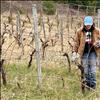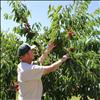valley views
Climate Corner
Hey savvy news reader! Thanks for choosing local.
You are now reading
3 of 3 free articles.
Montana livestock production will be challenged by the climate conditions projected for 2030-2100 that result from increasing greenhouse gas emissions to the atmosphere.
The challenges center on the interactions between a changing climate and evolving prices for animals, rising production costs, pandemics arising from animal confinement facilities, and global pressures to increase protein-production efficiency.
Temperature and precipitation trends from 1990 to present point to intense summer drought, more rangeland wildfires, and increased frequency of extreme weather events. Because the US plays an important role in feeding the world’s population, the most fertile midwestern crop-producing region will also likely see a shift from producing feed for livestock feedlots to more production of crops for human consumption.
Montana livestock producers are already modifying their water management during periods of drought by increasing the number of holding ponds to catch snow melt and spring precipitation, drilling new wells, and redirecting water from streams. These approaches address immediate water needs for animals, increase shallow groundwater recharge, decrease flooding during extreme precipitation events, and reduce short-term downstream sedimentation.
However, these actions are ultimately problematic: Stock ponds disrupt flow of water causing seasonal or intermittent streams to dry and decrease downstream flow. As ponds shrink, they become sources of water contamination from livestock waste and fertilizers; the resulting nutrient-rich conditions promote excessive algae growth, potentially poisoning water supplies, and can support mosquito-borne disease. In addition, stock ponds increase water-surface area for evaporation leading to a net loss of water for animals and deep groundwater recharge.
The number of days of extreme heat is significantly increasing across Montana, and heat stress ultimately leads to reduced productivity and increased management costs. If livestock cannot cool down at night, heat stress, during the day and night, reduces feed intake, causing slower growth, lower weight gain, and decreased reproductive performance. Animals respond to hot summer nights by increasing water consumption in an attempt to regulate their body temperature and stay hydrated. Thirsty cattle add to stress on water resources, particularly in areas with limited or inconsistent supplies and little shade.
So how might livestock producers in Montana plan for conditions in the mid-century and beyond? Climate change could represent an economic opportunity for MT ranchers, because as demand for more-efficient, high-protein food production, and global demand for meat continues to rise, marginal croplands may be better used for meat production. The current practice of transporting MT livestock to the Midwest to fatten and process meat is inefficient and adds to greenhouse gas emissions. Alternatively, strategies that include finishing animals on rangeland, growing multispecies cover crops for finishing, and selecting water-efficient livestock breeds and species could be a win-win for livestock producers.
Montana livestock producers might also consider switching to drought-tolerant cattle breeds, like Bos Taurus breeds of Spanish and/or African origins, including Mashona, Criollo, Romosinuano, Tuli, and Senepol, or bison. Bison, native to Montana, have evolved certain traits that make them more resilient to high temperatures than domestic cattle. Bison have lower surface-area-to-volume ratio helping them regulate heat more effectively. Their bodies heat up more slowly and cool down faster. Bison are more likely to seek shelter from the sun during the hottest part of the day and engage in behavior such as wallowing to cool down. While cattle need frequent access to water during periods of heat stress, bison are capable of tolerating longer intervals between drinking and have better ability to travel long distances to water.
Montana livestock producers are faced with new challenges from climate change, and rethinking management adaptations now can lead to a more sustainable economic future.
Bruce Maxwell is professor emeritus in the Department of Land Resources & Environmental Sciences at Montana State University.
















